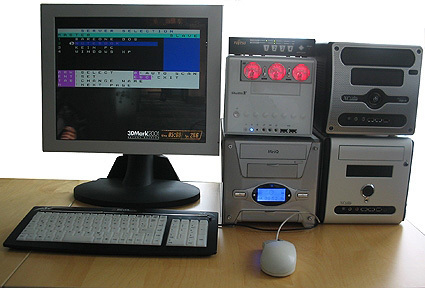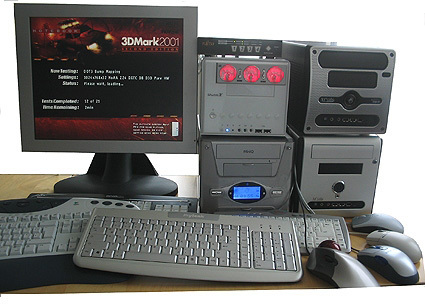Saving Space: 4 Port KVM Switches
A KVM Switch Saves Workstation Space
Four computers can be operated entirely independently of one another with only one monitor, one keyboard and one mouse.
Have you always wanted to acquire a second or even a third PC but balked because of limited space? After all, not many users have a desk that's big enough to accommodate several monitors and keyboards and mice! KVM switch boxes are one solution to this space problem. The abbreviation KVM stands for (K)eyboard - (V)ideo - (M)ouse. Depending on the type of KVM switch, USB devices and speakers can also be used in conjunction with it. KVM boxes come with varying numbers of ports: 2-port, 4-port, 8-port and multiports. KVM switches are also available for server rooms that can support 32 client computers at the same time and are even cascadable. In other words: With every switch outlet, it is possible to run another KVM switch.
A 4-port KVM switch, as the name implies, allows you to connect up to four computers using only one monitor and one keyboard/mouse. The monitor and the two input devices are connected directly to the KVM switch and not to the client computer. Special connection cables for video and PS/2 or USB signals connect the four client PCs to the switch box. A button or knob on the switch box allows you to switch quickly between the individual client computers. The KVM switch also guarantees that the client PC does not crash when it is disconnected from the keyboard and mouse. Almost all KVM boxes confirm the switchover with an acoustic signal, and they have LEDs indicating which PC is currently being served by the console. An on-screen display (OSD) for better support of the computer is still a luxury with 4-port switch boxes; only the FS-1004MT from Fujitsu offers this feature.
Without a KVM switch: If every computer had its own keyboard and mouse, the workstation would look this chaotic. Not pictured: the three additional monitors.
Get Tom's Hardware's best news and in-depth reviews, straight to your inbox.


